Thanks to our travel reporter Kathy Chin Leong for this great article
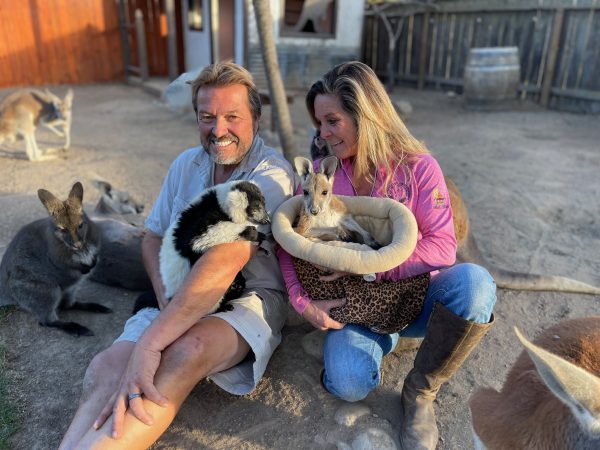
Lisa and David Jackson have very unusual housemates. One only needs to go to the bathroom once a week. Another is crazy. And a third is so adaptable and kind that she will hold back her true self in order to accommodate others. These companions are like family to the Jacksons, and they are animals.
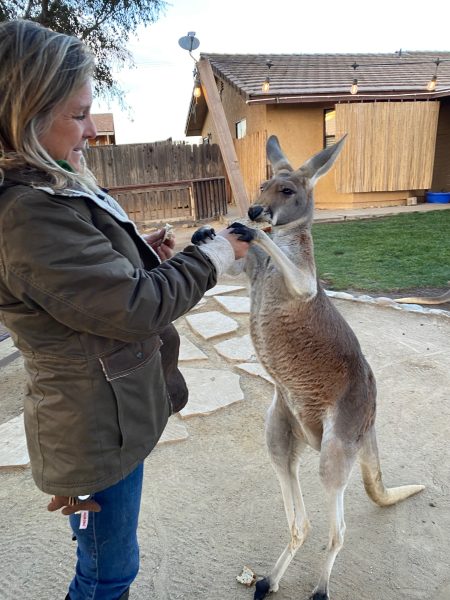
On this 40-acre compound passed down through the generations of Jacksons, creatures of every ilk (about 100 of them) call this home. Lisa and David have dubbed it a “rescue zoo.” This husband and wife team lives on the premises towards the back of the property. While the majority of the critters are penned and caged in the front, a number of them dwell in the personal abode of their human mom and dad. Eddie, the sloth, is pretty low maintenance as he poops and pees but once a week. The 40-year-old capuchin monkey is named Crazy for good reason. Newest to the brood is Oaxaca, the baby bobcat who is so sensitive and affectionate she will make every effort to retract her claws when you stroke, hold, or play with her. Seven kangaroos can be seen bouncing to their hearts’ delight in the backyard as their neighbor, a black and white lemur swings in a generously sized cage.
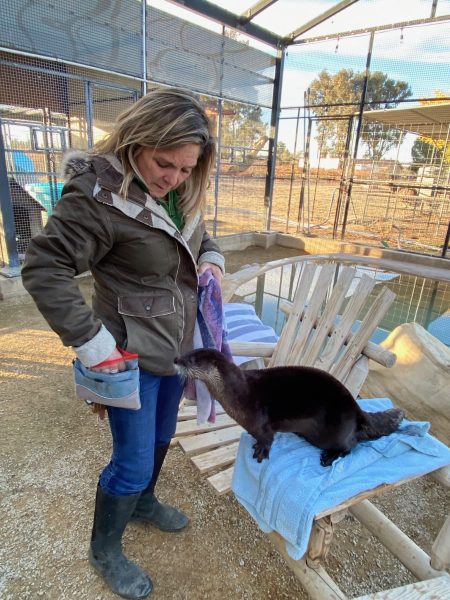
To come to Zoo to You (under the non-profit Conservation Ambassadors), is to enter the animal menagerie of a living Dr. and Mrs. Doolittle where most critters are victims of a dark past. Some have been smuggled into the country for sale. Others have been abused such as Crazy, the capuchin monkey who was tied to a tree and regularly taunted. The mother of Oaxaca the bobcat abandoned her at birth.
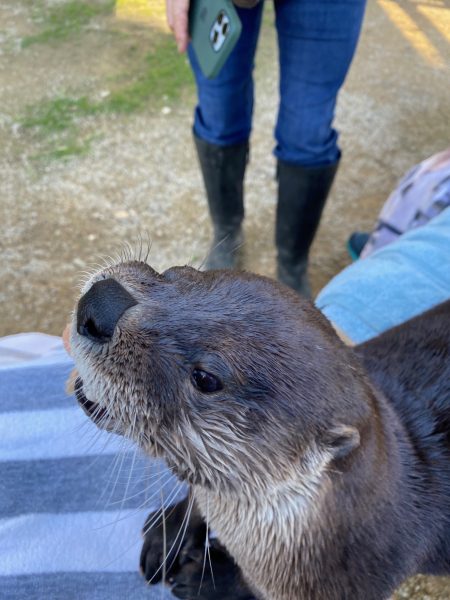
At Zoo to You, walk-ins are not allowed. You must reserve a private tour ahead of time. It costs $600 for two guests (plus $150 for each additional one) to secure a two-hour encounter led by Lisa herself. In fact, she leads every single one. “It’s got to be me,” she stresses. “Who else can do this?” And she’s right. The former supervising trainer for Shamu the killer whale at SeaWorld knows the origin story of each mammal, bird, fish, insect, and reptile. She worries about them the few times she leaves the premises for a day off.
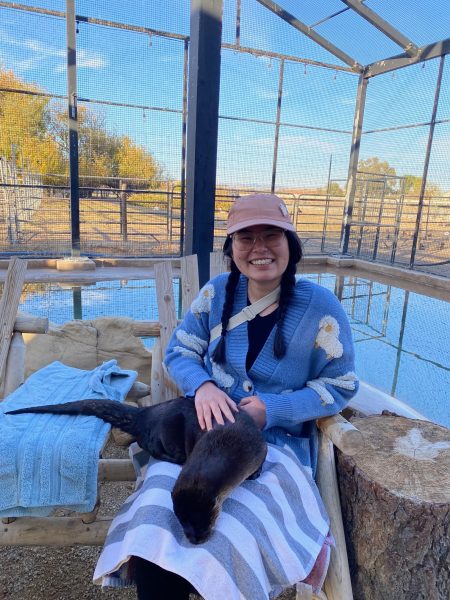
When visitors select a timeslot, Lisa sends them a questionnaire to ask who will be coming and what might their needs be. “They send me long pages of even more information – why they want to come, and what they hope to see,” she says. Because you cannot interact with all the inhabitants in a single day, a number of guests return so they can visit with animals they did not see previously. Since the Jacksons have opened their place for tours in 2020 right after the pandemic began, patrons have come as many as five times. Often, people are so touched after the tour they send in donations to support the rescue work they do. The wild inhabitants will either live out the remainder of their days on the premises or the couple will find a suitable home for them. Says Lisa, “We love our animals, and we want what’s best for them.” And so, over the years, different occupants have roamed the premises. They once had a bear, another time a deer.
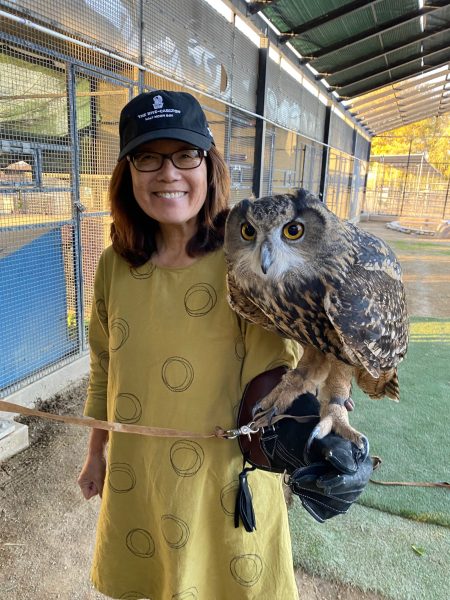
During the two-hour visit, Lisa finds out who the guests really want to meet among the huge cast of critters. If it’s Maya, the baby spider monkey, she will take them there first. As with any animal, she will encourage it to come out of the cage, but she will never force. Interactions between guests and creatures include holding, petting, feeding, or getting close for a photo opportunity.
The variety of hands-on interactions all depends on the mood, maturity, and comfort level of both guests and recipients. While a reasonable adult can hold the otter, a toddler cannot. Lisa sizes up each situation, including the nature of the guests, to see what is most appropriate.

On the day of our visit, my daughter-in-law Grace and I experienced the following:
- petted Oaxaca the bobcat inside one of the habitats
- fed Eddie the sloth apples as he was lying on his back like a sloth
- plunged our arms into a fishtank to let doctor fish nibble our skin
- held a blue-tongued skink in our arms
- petted Tucker, the river otter on our laps while it ate chicken drumsticks, bone and all.
- shone a blacklight on a scorpion to see its nocturnal blue skin tone
- fed corn on the cob to Buttercup, the baby capybara, while petting her under the chin
- retrieved and cast off Beelz, the raven who flew from the perch to eat peanuts fed by hand
- retrieved and cast off a Harris hawk who also soared from the perch to eat a dead mouse from our gloved hands.
- held and nervously petted Sophia, a Eurasian eagle owl, the largest one in the world at five pounds She was smuggled into the country as an egg.
- took photos of the pair of sibling screech owls, a species that ironically do not screech
- watched rascally otters hunt for live goldfish which didn’t stand a chance
- fed kangaroos slices of Dave’s Killer Multi-grain bread, and learned they don’t like the crusts, just like me
- fed gummy worm candy to Bakari the lemur during happy hour
- rode on the animal train, hand-painted by local artists and hand-built by David
- watched a zebu feeding at dusk
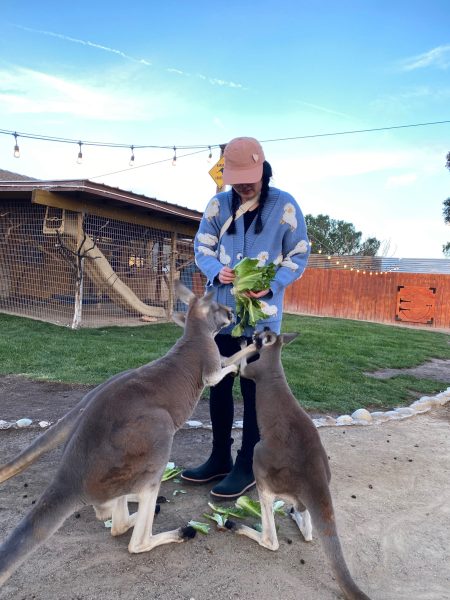
The parade of encounters is unforgettable and exhilarating. It tests your courage if you never have had one-on-one time with wild animals before. Entering Lisa’s backyard to be suddenly surrounded by kangaroos can be intimidating. When one stood up on its hind legs, he appeared over four feet tall, and we stood there, locking eyes, toe to toe, woman to beast. I had to surrender my sense of personal space.

Lisa shared fun facts about each resident and answered everyone’s questions during the tour without any indication of weariness. In her line of work, she is feeding, cleaning cages, giving tours, and fundraising to sustain the rescue mission. David, who has a degree in exotic animal training and zoo management, is also toiling, building more habitats, examining the welfare of each animal, and dealing with agencies and callers who want to drop off animals for various reasons. Meanwhile, Lisa is often seen kissing and hugging her furry and tailed friends as she assures them of their beauty and value.
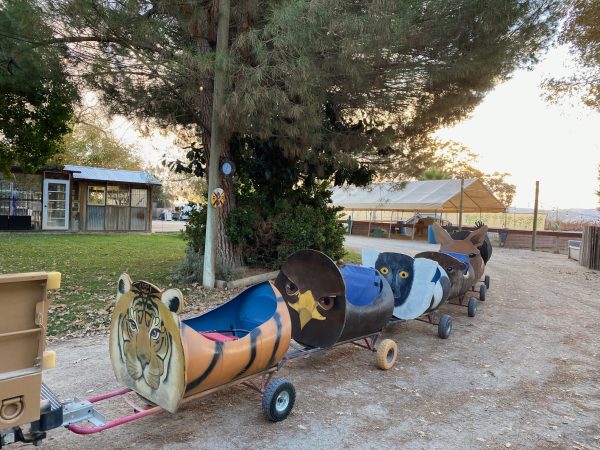
Other than tours, she and David take animals on the road or via airplane to wildlife conservation fundraisers, corporations, and classrooms for education and conservation reasons. This is what they did exclusively pre-pandemic. David established the sanctuary 33 years ago as a safe haven for animals in desperate need. Bringing a few out at a time to scores of observers and educating the public on how to respect living creatures was the original Zoo to You mandate. When the pandemic forced them to cancel all their gigs, they sprung to action with a plan in 2020 to offer private tours out in the open, Covid-safe environment. It was a stroke of genius.
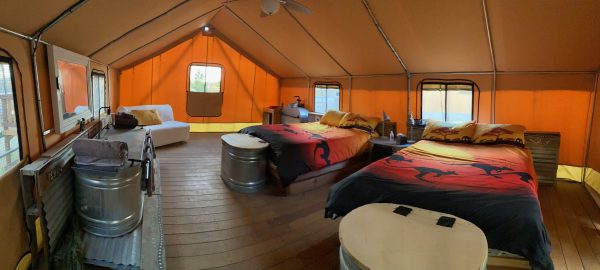
For those who cannot get enough of the animal kingdom in two hours, a $500 overnight experience in one of the two heated luxury tents is the ticket to a safari-like adventure in the African savannah. At night, the hybrid wolves can be heard howling while the ducks quack in the distance. All this is a reminder that you are where the wild things are.
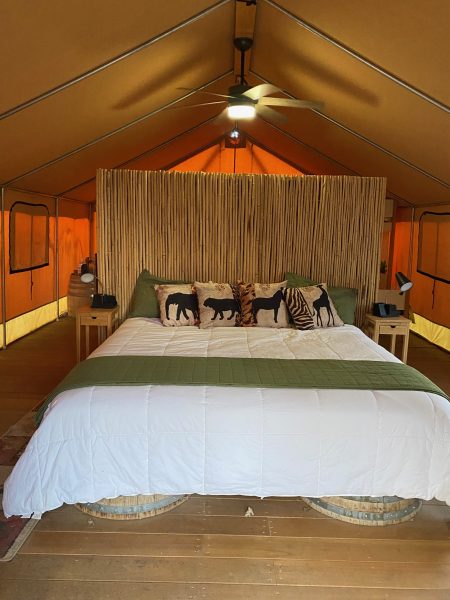
While she leads plenty of tours, Lisa insists word of Zoo to You’s animal encounters must get out to more people. Her husband recently constructed a pavilion so they can host weddings and larger-scale events. Right now, Lisa prefers small tours that are personal, but they can scale up to give more guests an animal experience that is engaging, but different. Lisa and David are hoping next time visitors come to Paso Robles for the wine, they can stay for the swine, and the camels, and the alligators….
- For more about Zoo to You in Paso Robles visit https://www.conservationambassadors.org/

